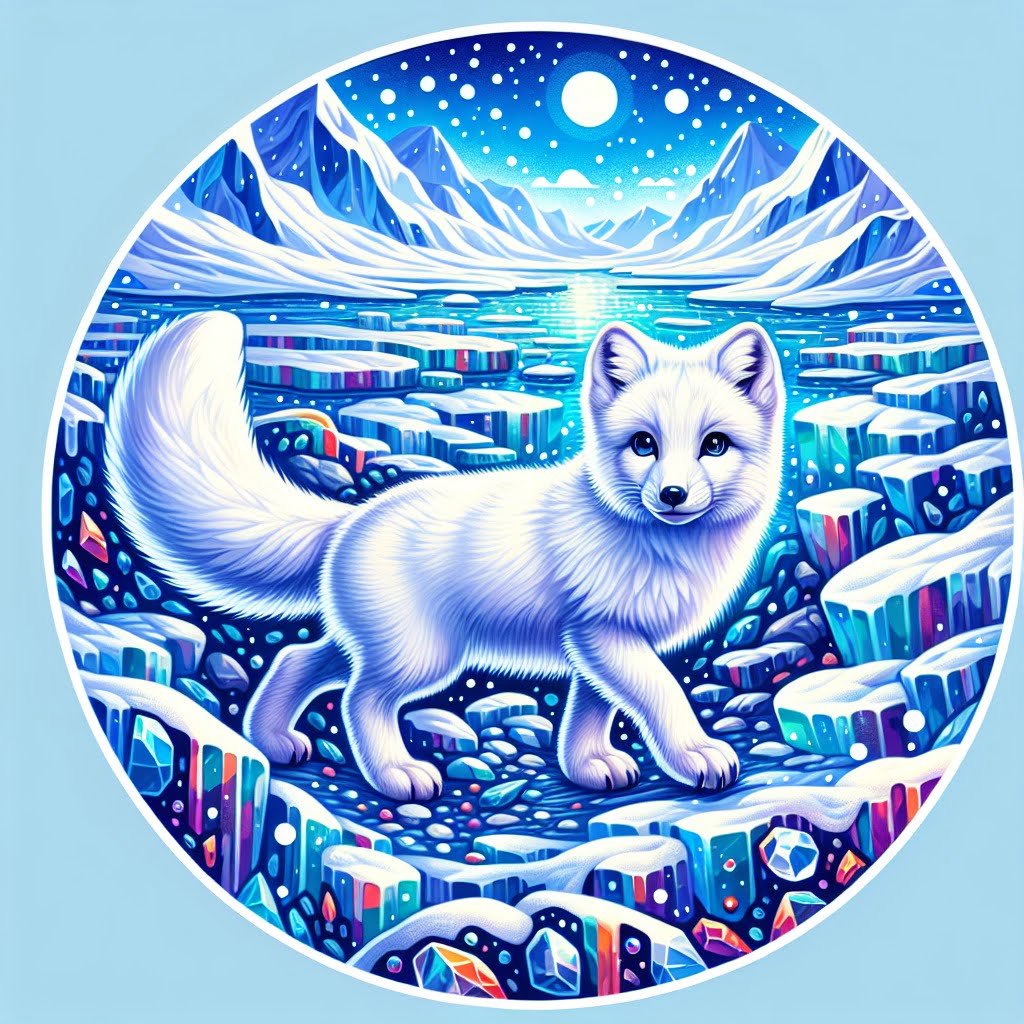Welcome to a world of fascinating discoveries and captivating insights into the intricate world of animal homes! In this post, we delve into the realm of “Fun Facts for Kids About Animal Homes,” where we explore the remarkable shelters and habitats that creatures create for themselves. From ants constructing massive underground colonies to birds building intricate nests, each unique abode showcases the incredible diversity and ingenuity of the natural world. Join us on this exciting exploration as we uncover the hidden wonders of animal architecture, fostering a deeper appreciation for the marvels of the wild. Get ready to expand your knowledge, spark curiosity, and embark on a journey of discovery into the captivating world of animal homes. Welcome to the enchanting world of Fun Facts for Kids About Animal Homes!
Fun Facts for Kids About Animal Homes
1. Ants Build Massive Underground Colonies

For younger kids: Ants live in huge homes underground with many tunnels!
For older kids: Ant colonies can consist of millions of ants and extensive tunnel systems that create a massive underground city, complete with distinct chambers for different purposes.
Detailed explanation:Ants are fascinating creatures that are known for their impressive ability to build massive underground colonies. These intricate networks of tunnels and chambers serve as homes for ant colonies, which can contain thousands or even millions of individual ants.
One of the most remarkable aspects of these underground colonies is their organization and structure. Ants work together in a highly coordinated manner to excavate tunnels, construct chambers, and maintain the overall infrastructure of the colony. Each ant has a specific role to play in the colony, whether it be as a worker, a soldier, or a queen. This division of labor ensures that the colony functions efficiently and effectively.
Fun fact for kids about animal homes is that ants’ underground colonies are designed to provide protection and security for the colony members. The tunnels and chambers of the colony can extend several feet underground, providing a safe and sheltered environment for the ants to live and work. In addition to protection from predators and inclement weather, the underground environment also helps to regulate temperature and humidity levels, creating a comfortable and stable living space for the ants.
In conclusion, ants’ massive underground colonies are a marvel of nature, showcasing the incredible teamwork, organization, and engineering skills of these tiny insects. By working together, ants are able to create complex and efficient living spaces that support the needs of the entire colony. This fun fact about animal homes is just one example of the amazing adaptations and behaviors that can be found in the natural world.
Fun Facts for Kids About Animal Homes
2. Bees Make Hives from Beeswax

For younger kids: Bees make hexagon-shaped homes where they store honey!
For older kids: Beeswax, produced by young worker bees, is used to build intricate hexagon-shaped honeycomb cells within the hive. These cells serve as storage for honey, pollen, and eggs.
Detailed explanation:Bees are fascinating creatures known for their intricate hives made from beeswax. These animal homes are not only functional but also incredibly complex in their design and construction. Beeswax is produced by worker bees through glands on their abdomen, which is then used to build the hexagonal cells that make up the hive.
Fun Facts for Kids About Animal Homes, such as bee hives, can help children understand the importance of these structures in the animal kingdom. Bee hives serve as the central hub for a bee colony, providing shelter, protection, and storage for food and offspring. The hexagonal shape of the cells allows for efficient use of space and optimal storage of honey and pollen.
Furthermore, beeswax is a natural and versatile material that serves multiple purposes within the hive. It acts as a waterproof barrier, sealing the hive and protecting it from the elements. It also has antibacterial properties, helping to maintain the cleanliness and health of the hive.
In addition to its practical uses, beeswax also plays a role in communication within the colony. The pheromones produced by the queen bee are spread throughout the hive by the beeswax, signaling important messages to the other bees.
Overall, the fact that bees make hives from beeswax showcases the remarkable abilities and intelligence of these tiny creatures. By learning Fun Facts for Kids About Animal Homes like bee hives, children can gain a greater appreciation for the natural world and the incredible ways in which animals adapt and thrive in their environments.
Fun Facts for Kids About Animal Homes
3. Termites Create Huge Mounds of Soil

For younger kids: Termites build giant piles of dirt for their homes!
For older kids: Termites construct towering mounds from soil, saliva, and excrement, with intricate ventilation and temperature-regulating systems to create a suitable environment for their colonies.
Detailed explanation:Termites are fascinating creatures that are known for their impressive architectural abilities. One of the most remarkable things about termites is their ability to create huge mounds of soil, which serve as their homes. These mounds can reach impressive heights and are intricate structures that provide shelter and protection for the entire termite colony.
The termite mounds are constructed by a combination of saliva, soil, and termite droppings, which are all mixed together to form a hard, sturdy structure. This mixture is then used to build tunnels and chambers within the mound, creating a complex network of passageways and rooms for the termites to live in.
The construction of these mounds is carried out by worker termites, which are responsible for gathering building materials and constructing the mound. The workers work tirelessly, moving soil and other materials to build and maintain the mound. The mound itself serves as a regulated environment for the termites, providing a stable temperature and humidity level that is crucial for their survival.
The termite mounds are also remarkable for their ventilation system, which helps to regulate the temperature and humidity within the mound. The mounds are designed in such a way that they create a natural airflow, allowing fresh air to enter the mound and stale air to escape. This ventilation system helps to keep the colony healthy and thriving.
In conclusion, termites are truly remarkable creatures that demonstrate incredible architectural abilities in the construction of their mounds. Studying these amazing structures provides us with valuable insights into the behavior and biology of these fascinating insects.
In learning more about Fun Facts for Kids About Animal Homes, we can further appreciate the complexity and ingenuity of the natural world.
Fun Facts for Kids About Animal Homes
4. Birds Build Intricate Nests for Their Eggs

For younger kids: Birds use sticks, grass, and leaves to build cozy homes for their eggs!
For older kids: Birds’ nests are ingeniously constructed using a variety of materials, from sticks and grass to mud and spider silk, tailored to each species’ specific needs and surroundings.
Detailed explanation:Birds build intricate nests for their eggs as a way to provide protection, warmth, and security for their offspring. These nests are carefully constructed using a variety of materials such as twigs, grass, feathers, and mud, depending on the species of bird. Each bird species has its own unique nesting behavior and design, which is passed down through generations.
One of the most fascinating aspects of bird nests is the sheer diversity in construction methods and styles. For example, weaverbirds are known for their elaborate woven nests that hang from tree branches like intricate baskets. On the other hand, penguins build their nests out of stones on the ground to keep their eggs safe from predators. Hummingbirds use spider silk and plant fibers to create tiny, cup-shaped nests that are barely visible to the naked eye.
Birds also exhibit remarkable architectural skills when building their nests. They carefully select the location, shape, and size of their nests to ensure the best possible environment for their eggs. Some birds even incorporate camouflage techniques to help conceal their nests from predators.
Overall, studying birds’ nest-building behaviors can provide valuable insights into their biology and ecology. By understanding how birds create their homes, we can gain a deeper appreciation for the complexity and beauty of the natural world. These fun facts for kids about animal homes not only entertain young minds but also inspire curiosity and a love for wildlife.
Fun Facts for Kids About Animal Homes
5. Rabbits Dig Extensive Burrows for Shelter

For younger kids: Rabbits build big tunnels underground to keep safe from predators!
For older kids: Rabbits excavate complex burrow systems, often with multiple entrances, to provide shelter from extreme weather and to protect themselves and their young from predators.
Detailed explanation:One of the fascinating aspects of rabbit behavior is their instinctual ability to dig extensive burrows for shelter. These burrows, also known as warrens, serve as crucial hiding spots and homes for rabbits to protect themselves from predators and harsh weather conditions.
Rabbits are excellent diggers, using their powerful hind legs and sharp claws to excavate intricate tunnel systems underground. These burrows can range in complexity, with some including multiple entrances and exits, various chambers for sleeping and nesting, and even emergency escape routes. The tunnels are typically lined with grass, fur, and other soft materials to provide insulation and comfort for the inhabitants.
These burrows not only provide shelter but also play a crucial role in maintaining the rabbit population. Female rabbits, known as does, give birth to their young, called kits, inside the safety of the burrow. The intricate tunnel system helps protect the vulnerable newborns from predators until they are old enough to venture outside.
Furthermore, the act of digging burrows also helps to aerate and enrich the soil, promoting plant growth in the surrounding area. This creates a more diverse and sustainable ecosystem for other animals as well.
In conclusion, the extensive burrows that rabbits dig serve as essential shelters, nurseries, and even contribute to the overall health of their environment. These Fun Facts for Kids About Animal Homes exemplify the incredible adaptability and resourcefulness of these small but mighty creatures.
Fun Facts for Kids About Animal Homes
6. Spiders Create Elaborate Webs for Hunting

For younger kids: Spiders spin sticky webs to catch insects for food!
For older kids: Spider silk, known for its strength and elasticity, is used to construct intricate webs that serve as both traps for prey and homes for the spiders themselves.
Detailed explanation:Spiders are fascinating creatures that are known for their ability to create intricate webs for hunting. These webs serve as both traps for unsuspecting prey and as homes for the spiders themselves. The process of constructing a web is a remarkable feat of engineering, as spiders use their silk glands to produce the silk threads that make up the web.
Fun Facts for Kids About Animal Homes:
One of the most amazing things about spider webs is their incredible strength and durability. Despite being made of silk, which is incredibly lightweight, spider webs are actually stronger than steel of the same thickness. This allows spiders to capture insects much larger and stronger than themselves, such as flies, beetles, and even small birds.
Another interesting aspect of spider webs is their unique design. Different species of spiders create different types of webs, each tailored to their hunting style and prey. For example, orb-weaver spiders create intricate, circular webs that are ideal for catching flying insects, while funnel-web spiders construct funnel-shaped webs that are designed to trap ground-dwelling prey. Some spiders even create elaborate zig-zag patterns in their webs to serve as camouflage and confuse their prey.
In addition to serving as hunting tools, spider webs also double as shelters for the spiders. Many species of spiders will retreat to the safety of their webs when not actively hunting, using them as a secure place to hide from predators and lay their eggs. The silk material of the web is also a versatile resource for spiders, as they can use it to build egg sacs, wrap up prey for later consumption, and even create safety lines for themselves while moving around their environment.
Overall, the elaborate webs created by spiders are not only marvels of natural engineering, but also crucial elements of their survival and reproductive strategies. They represent a fascinating example of the ingenuity and adaptability of these remarkable arachnids.
Fun Facts for Kids About Animal Homes
7. Dolphins Live in Pods for Socializing

For younger kids: Dolphins swim in big groups with their families and friends!
For older kids: Dolphins form tight-knit social groups called pods, which can consist of hundreds of individuals, providing them with protection, companionship, and a sense of community.
Detailed explanation:Dolphins are highly social animals that live in groups called pods. These pods can consist of anywhere from a few individuals to over one hundred, depending on the species. The pods serve as a tight-knit community for dolphins, providing them with companionship, protection, and opportunities for socializing.
Within a pod, dolphins form strong bonds with one another through various social interactions such as playing, hunting, and even communicating through a complex system of clicks, whistles, and body language. These interactions are crucial for the dolphins’ well-being and serve as a means of building trust and cooperation within the group.
Living in pods also allows dolphins to work together to hunt for food more effectively. They often use strategic tactics, such as herding fish into tight shoals, to make hunting more efficient. This cooperative behavior showcases the intelligence and adaptability of dolphins as highly social creatures.
For young dolphins, living in a pod provides a nurturing environment where they can learn essential survival skills from older, more experienced individuals. This communal living arrangement helps ensure the success and longevity of the pod as a whole.
In conclusion, the fact that dolphins live in pods for socializing demonstrates the importance of community and companionship in the animal kingdom. These fun facts for kids about animal homes showcase the fascinating world of dolphin social behavior and highlight the unique ways in which these intelligent creatures interact with one another in their natural environment.
Fun Facts for Kids About Animal Homes
8. Prairie Dogs Build Extensive Underground Towns

For younger kids: Prairie dogs live in big towns with lots of tunnels and rooms!
For older kids: Prairie dog towns are elaborate interconnected burrow systems, equipped with chambers for sleeping, rearing young, and even specific latrines for waste disposal.
Detailed explanation:Prairie dogs are well-known for their unique and complex underground burrow systems, which are often referred to as “towns.” These towns are not just simple holes in the ground; they are intricate networks of tunnels, rooms, and entrances that serve a variety of purposes for the prairie dog community. These underground homes provide shelter from predators and extreme weather conditions, as well as a safe place for the prairie dogs to sleep, raise their young, and store food.
One of the most fascinating aspects of prairie dog towns is the way in which they are organized. Each burrow system is divided into different chambers for specific functions, such as living quarters, nurseries, and even bathrooms. The entrances to the burrows are strategically placed to allow for easy access and escape routes in case of danger. These towns can be quite extensive, with some encompassing hundreds of interconnected burrows spread out over several acres of land.
Prairie dogs are highly social animals, and their underground towns play a crucial role in their social structure. They use various forms of communication, such as vocalizations and body language, to coordinate their activities and warn each other of potential threats. Their elaborate burrow systems provide them with a sense of security and community, allowing them to thrive in their natural habitat.
In conclusion, prairie dogs’ extensive underground towns are not only a fascinating aspect of their behavior, but also a vital component of their survival in the wild. These complex structures demonstrate the intelligence and adaptability of these animals, making them a truly remarkable species to learn about. Fun Facts for Kids About Animal Homes can help children appreciate the diversity and ingenuity of the natural world.
Fun Facts for Kids About Animal Homes
9. Sloths Live in Trees to Stay Safe

For younger kids: Sloths hang out in trees all day to stay safe from other animals!
For older kids: Sloths spend most of their lives high up in trees, using their slow movement and specialized claws to navigate and find safety from predators.
Detailed explanation:Sloths, known for their slow and leisurely lifestyle, spend the majority of their time high up in the trees of the rainforest. This behavior is not just due to their laziness, but rather serves as a survival strategy. Living in trees helps sloths stay safe from predators on the forest floor.
One of the main predators of sloths is the jaguar. By residing in the treetops, sloths are able to avoid detection from these powerful predators. Their slow movement and camouflage also make them difficult to spot amongst the lush greenery of the rainforest canopy.
Furthermore, sloths have adapted to their arboreal lifestyle by developing specialized adaptations. Their long claws allow them to easily grip onto tree branches, while their slow metabolism helps them conserve energy when food sources are scarce. This unique set of traits makes sloths well-suited for life in the trees.
In addition to protection from predators, living in trees also provides sloths with easy access to their primary food source: leaves. Their diet consists mainly of leaves, which are easily accessible in the treetops. This diet may not be very nutritious, but it provides sloths with the energy they need to survive in their tree-dwelling habitat.
Overall, the fact that sloths live in trees to stay safe is a fascinating example of how animals have adapted to their environment. By understanding these Fun Facts for Kids About Animal Homes, we can gain a deeper appreciation for the unique ways in which animals have evolved to thrive in their natural habitats.
Fun Facts for Kids About Animal Homes
10. Turtles Make Nests on Beaches to Lay Eggs

For younger kids: Turtles make holes in the sand to lay their eggs!
For older kids: Female turtles travel ashore to carefully dig nests in the sand, where they lay and bury their eggs before returning to the ocean, leaving the hatchlings to fend for themselves.
Detailed explanation:Turtles are fascinating creatures that have been around for millions of years. One interesting behavior that turtles exhibit is the making of nests on beaches to lay their eggs. This is a crucial part of their reproduction process, as it ensures the survival of their offspring.
When it comes time for a female turtle to lay her eggs, she will typically return to the same beach where she was born. This behavior, known as natal homing, is an incredible feat of navigation and memory. Once she arrives at the beach, the turtle will use her flippers to dig a deep hole in the sand. This is where she will deposit her eggs, which are then covered up with sand to protect them from predators.
The location of the nest is crucial for the survival of the eggs. Turtles often choose beaches that provide the right temperature and moisture levels for the eggs to develop properly. The sand also acts as a natural incubator, keeping the eggs warm until they are ready to hatch.
After laying her eggs, the female turtle will carefully cover up the nest and return to the ocean. She plays no role in caring for the eggs or the hatchlings once they emerge. The baby turtles will make their way to the water on their own, using cues such as the reflection of the moon on the ocean to guide them.
Overall, the act of turtles making nests on beaches to lay eggs is a fascinating example of animal behavior. It is just one of the many Fun Facts for Kids About Animal Homes that showcase the incredible adaptations and instincts of creatures in the natural world.
Did You Know?
Some animals, like hermit crabs, use discarded shells as their homes, carrying them around on their backs for protection and comfort.
Fun Facts for Kids About Animal Dwellings
Embark on a fascinating journey into the intriguing world of animal homes with our latest blog post, “Fun Facts for Kids About Animal Homes.” This captivating exploration will not only entertain and educate young readers, but will also instill a sense of wonder and appreciation for the natural world.
Discover the amazing diversity of animal homes, from the cozy dens of foxes to the intricate hives of bees, and learn about the remarkable adaptability and ingenuity of creatures big and small. By delving into the unique structures and materials used by different species, children will gain a deeper understanding of the importance of protecting habitats and preserving biodiversity.
More than just entertaining tidbits, these fun facts about animal homes can spark curiosity, fuel imagination, and inspire a lifelong love of nature. Encourage your child to delve into the wonders of the wild and foster a sense of responsibility towards our planet’s precious ecosystems.
So, whether you’re a parent looking to engage your child’s curiosity, a teacher in search of educational resources, or a nature enthusiast eager to learn something new, “Fun Facts for Kids About Animal Homes” is the perfect read for anyone interested in unraveling the mysteries of the natural world. Don’t miss out on this enriching and rewarding opportunity to explore the beauty and complexity of the homes that our animal friends call their own.
Sources and additional information for Fun Facts for Kids About Animal Homes
San Diego Zoo KidsThe Smithsonian InstitutionDK Find Out!Australian MuseumWorld Wildlife FundThe Nature ConservancyAnimal PlanetMonterey Bay AquariumPBS NatureSmithsonian’s National Zoo & Conservation Biology InstituteWorld Wildlife FundAnimal Diversity Web (University of Michigan)IUCN Red List of Threatened SpeciesThe Cornell Lab of Ornithology – All About BirdsNational Audubon SocietyEncyclopedia of LifeSeaWorld Parks & EntertainmentAustralian Museum – AnimalsEncyclopedia of Life




